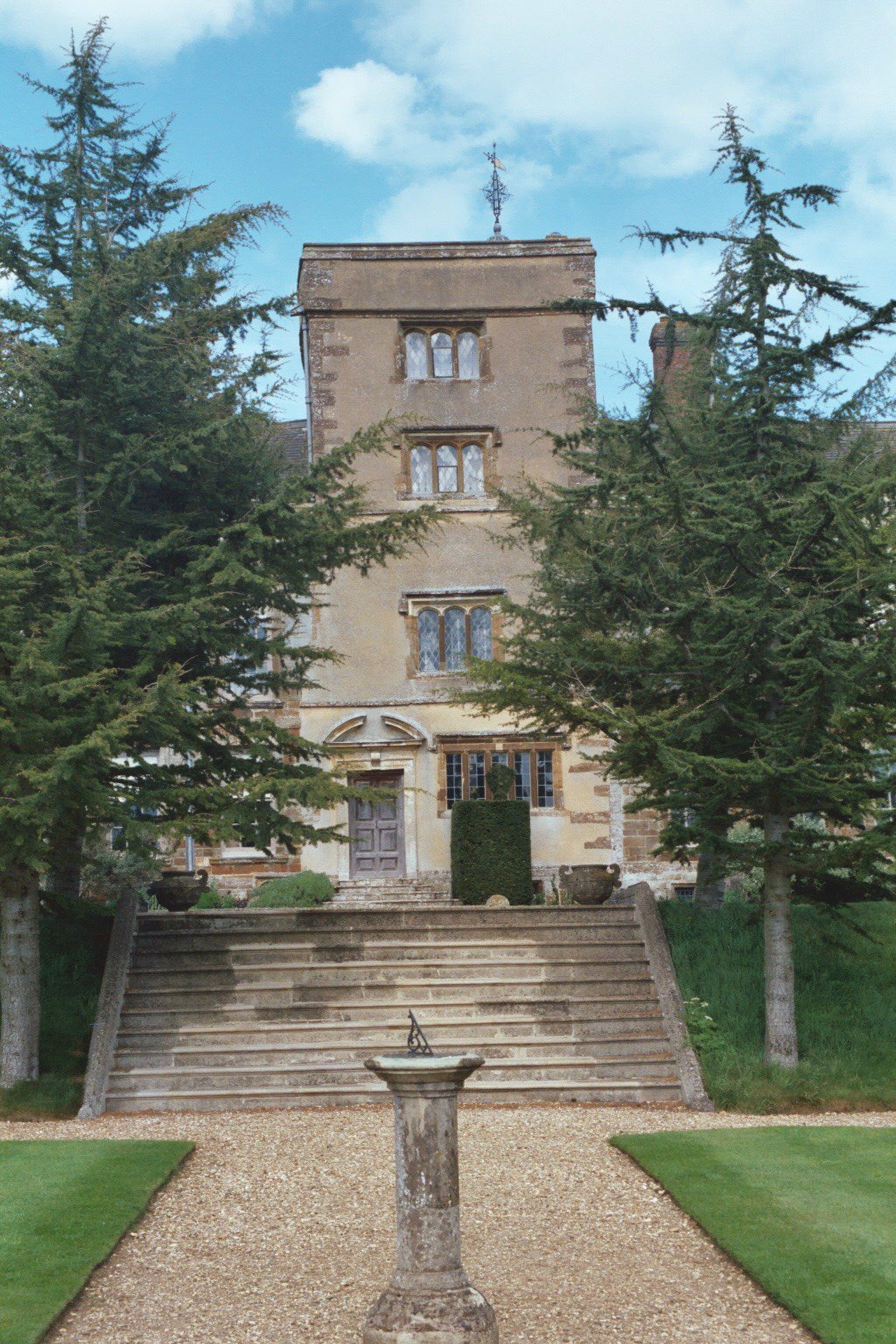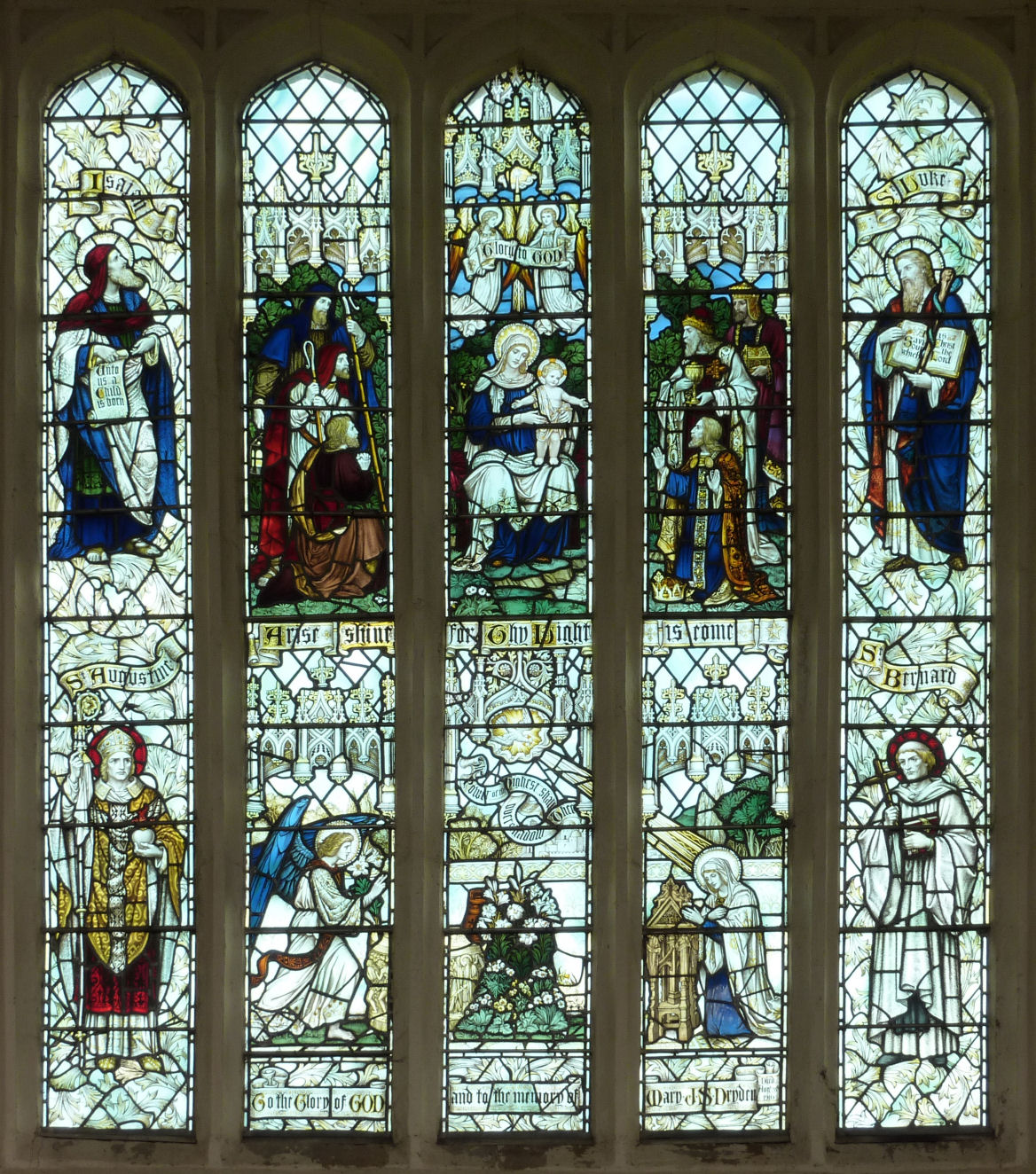|
Canons Ashby
Canons Ashby is a small village and civil parishes in England, civil parish in West Northamptonshire, England. The population of the village is included in the civil parish of Preston Capes. Its most notable building is Canons Ashby House, a National Trust for Places of Historic Interest or Natural Beauty, National Trust property. The parish church is a surviving fragment of Canons Ashby Priory. It is situated from Moreton Pinkney. A railway station was located between the two villages, on the Stratford-upon-Avon and Midland Junction Railway (later part of the London Midland and Scottish Railway), but the station closed in April 1952. The village is part of the Daventry (UK Parliament constituency), Daventry constituency. References External links Canons Ashby "masonic" chamber discovered after 400 years. Villages in Northamptonshire West Northamptonshire District Civil parishes in Northamptonshire {{Northamptonshire-geo-stub ... [...More Info...] [...Related Items...] OR: [Wikipedia] [Google] [Baidu] |
West Northamptonshire
West Northamptonshire is a unitary authority area covering part of the ceremonial county of Northamptonshire, England, created in 2021. By far the largest settlement in West Northamptonshire is the county town of Northampton. Its other significant towns are Daventry, Brackley and Towcester; the rest of the area is predominantly agricultural villages though it has many lakes and small woodlands and is passed through by the West Coast Main Line and the M1 and M40 motorways, thus hosting a relatively high number of hospitality attractions as well as distribution centres as these are key English transport routes. Close to these is the leisure-use Grand Union Canal. The district has remains of a Roman town Bannaventa, with relics and finds in the main town museums, and its most notable landscape and the mansion is Althorp. History West Northamptonshire was formed on 1 April 2021 through the merger of the three non-metropolitan districts of Daventry, Northampton, and South North ... [...More Info...] [...Related Items...] OR: [Wikipedia] [Google] [Baidu] |
Northamptonshire
Northamptonshire (; abbreviated Northants.) is a county in the East Midlands of England. In 2015, it had a population of 723,000. The county is administered by two unitary authorities: North Northamptonshire and West Northamptonshire. It is known as "The Rose of the Shires". Covering an area of 2,364 square kilometres (913 sq mi), Northamptonshire is landlocked between eight other counties: Warwickshire to the west, Leicestershire and Rutland to the north, Cambridgeshire to the east, Bedfordshire to the south-east, Buckinghamshire to the south, Oxfordshire to the south-west and Lincolnshire to the north-east – England's shortest administrative county boundary at 20 yards (19 metres). Northamptonshire is the southernmost county in the East Midlands. Apart from the county town of Northampton, other major population centres include Kettering, Corby, Wellingborough, Rushden and Daventry. Northamptonshire's county flower is the cowslip. The Soke of Peterborough fal ... [...More Info...] [...Related Items...] OR: [Wikipedia] [Google] [Baidu] |
Daventry (UK Parliament Constituency)
Daventry is a constituency in Northamptonshire represented in the House of Commons of the UK Parliament since 2010 by Chris Heaton-Harris of the Conservative Party, who has served as Secretary of State for Northern Ireland since 2022. History The seat, one of many created in 1918, was a narrower form of the oldest creation of South Northamptonshire and lasted 32 years until it reverted into "South Northamptonshire". Finally today's seat was recreated mostly from the north of the South Northants seat in 1974. Since its recreation and during its first existence it has been served by Conservative MPs. As the 1997 majority was also not marginal, it has been to date an archetypal safe seat. Boundaries 1918–1950: The Boroughs of Daventry and Brackley, the Rural Districts of Brackley, Crick, Daventry, Hardingstone, Middleton Cheney, Potterspury, and Towcester, and part of the Rural District of Northampton. 1974–1983: The Boroughs of Daventry and Brackley, and the Rural Dist ... [...More Info...] [...Related Items...] OR: [Wikipedia] [Google] [Baidu] |
Civil Parishes In England
In England, a civil parish is a type of Parish (administrative division), administrative parish used for Local government in England, local government. It is a territorial designation which is the lowest tier of local government below districts of England, districts and metropolitan and non-metropolitan counties of England, counties, or their combined form, the Unitary authorities of England, unitary authority. Civil parishes can trace their origin to the ancient system of Parish (Church of England), ecclesiastical parishes, which historically played a role in both secular and religious administration. Civil and religious parishes were formally differentiated in the 19th century and are now entirely separate. Civil parishes in their modern form came into being through the Local Government Act 1894, which established elected Parish councils in England, parish councils to take on the secular functions of the vestry, parish vestry. A civil parish can range in size from a sparsely ... [...More Info...] [...Related Items...] OR: [Wikipedia] [Google] [Baidu] |
Preston Capes
Preston Capes is a village and civil parish in West Northamptonshire in England. The population at the 2001 census was 188, including Canons Abbey and increasing to 216 at the 2011 census. The village's name means "Priest Farm/Settlement". The village was owned by Hugo filius Nicholai de Capes in 1234. The Church of England parish church A parish church (or parochial church) in Christianity is the church which acts as the religious centre of a parish. In many parts of the world, especially in rural areas, the parish church may play a significant role in community activities, ... is dedicated to St Peter and St Paul. References External links Village website Villages in Northamptonshire West Northamptonshire District Civil parishes in Northamptonshire {{Northamptonshire-geo-stub ... [...More Info...] [...Related Items...] OR: [Wikipedia] [Google] [Baidu] |
Canons Ashby House
Canons Ashby House is a Grade I listed Elizabethan manor house located in the village of Canons Ashby, about south of the town of Daventry in the county of Northamptonshire, England. It has been owned by the National Trust for Places of Historic Interest or Natural Beauty, National Trust since 1981 when the house was close to collapse and the gardens had turned into a meadow. "The Tower" of the building is in the care of the Landmark Trust and available for holiday lets. Design The interior of Canons Ashby House is noted for its Tudor architecture, Elizabethan wall paintings and its Jacobean architecture, Jacobean plasterwork. It has remained essentially unchanged since 1710 and is presented as it was during the time of Dryden baronets, Sir Henry Edward Leigh Dryden (1818–1899), a Victorian antiquary with an interest in history. The house sits in the midst of a formal garden with colourful herbaceous borders, an orchard featuring varieties of fruit trees from the 16th centur ... [...More Info...] [...Related Items...] OR: [Wikipedia] [Google] [Baidu] |
National Trust For Places Of Historic Interest Or Natural Beauty
The National Trust, formally the National Trust for Places of Historic Interest or Natural Beauty, is a charity and membership organisation for heritage conservation in England, Wales and Northern Ireland. In Scotland, there is a separate and independent National Trust for Scotland. The Trust was founded in 1895 by Octavia Hill, Sir Robert Hunter and Hardwicke Rawnsley to "promote the permanent preservation for the benefit of the Nation of lands and tenements (including buildings) of beauty or historic interest". It was given statutory powers, starting with the National Trust Act 1907. Historically, the Trust acquired land by gift and sometimes by public subscription and appeal, but after World War II the loss of country houses resulted in many such properties being acquired either by gift from the former owners or through the National Land Fund. Country houses and estates still make up a significant part of its holdings, but it is also known for its protection of wild lands ... [...More Info...] [...Related Items...] OR: [Wikipedia] [Google] [Baidu] |
Parish Church
A parish church (or parochial church) in Christianity is the church which acts as the religious centre of a parish. In many parts of the world, especially in rural areas, the parish church may play a significant role in community activities, often allowing its premises to be used for non-religious community events. The church building reflects this status, and there is considerable variety in the size and style of parish churches. Many villages in Europe have churches that date back to the Middle Ages, but all periods of architecture are represented. Roman Catholic Church Each diocese (administrative unit, headed by a Bishop) is divided into parishes. Normally, a parish comprises all Catholics living within its geographically defined area. Within a diocese, there can also be overlapping parishes for Catholics belonging to a particular rite, language, nationality, or community. Each parish has its own central church called the parish church, where religious services take pla ... [...More Info...] [...Related Items...] OR: [Wikipedia] [Google] [Baidu] |
Canons Ashby Priory
Canons Ashby Priory was an Augustinian priory at Canons Ashby, Northamptonshire, England. History The Priory was founded by Stephen la Leye on a site to the south of the present church between 1147 and 1151 in the reign of Henry II. In 1253 the Augustinians were granted a licence to dig the Norwell, which still exists north of the present church, to supply water to the priory. In 1452, John Nantewych is named as the prior of Canons Assheby. Plea Rolls of the Court of Common Pleas; held at the National Archives; plaintiff in the 4th entry, in a plea of debt: http://aalt.law.uh.edu/AALT3/H6/CP40no764/bCP40no764dorses/IMG_1614.htm In 1537 after the Dissolution of the Monasteries the Crown granted the priory and its estates to Sir Francis Bryan, a close ally of Henry VIII. Bryan held the estate for only about a year before selling it in 1538 to Sir John Cope, a wealthy Banbury lawyer. Sir John's daughter Elizabeth inherited what is thought to have been the priory farmhouse ro ... [...More Info...] [...Related Items...] OR: [Wikipedia] [Google] [Baidu] |
Moreton Pinkney
Moreton Pinkney is a village and civil parish in West Northamptonshire, about north of Brackley. The 2011 Census recorded the parish's population as 371. The villages name means 'Moor farm/settlement'. It was held by the family of Pinchengi from 1199. In the 13th century, it was known as Geldenmortone, from Old English 'gylden' meaning, 'golden', probably because of its especial wealth. Manor In the reign of Edward the Confessor one Leuric held the manor of Moreton "freely", ''i.e.'' without a feudal overlord. He was dispossessed after the Norman Conquest of England and the Domesday Book of 1086 records that one Geoffrey held the manor of Gilo, brother of Ansculf de Picquigny. In the 12th century Henry de Pinkeny ''(sic)'' held the manor. In both surveys the manor was assessed at one and a half hides. Parish church The earliest evidence of Christianity in the parish is a fragment of an Anglo-Saxon stone cross in the churchyard of the Church of England parish church of St ... [...More Info...] [...Related Items...] OR: [Wikipedia] [Google] [Baidu] |
Stratford-upon-Avon And Midland Junction Railway
Stratford-upon-Avon (), commonly known as just Stratford, is a market town and civil parish in the Stratford-on-Avon district, in the county of Warwickshire, in the West Midlands region of England. It is situated on the River Avon, north-west of London, south-east of Birmingham and south-west of Warwick. The town is the southernmost point of the Arden area on the edge of the Cotswolds. In the 2021 census Stratford had a population of 30,495; an increase from 27,894 in the 2011 census and 22,338 in the 2001 Census. Stratford was originally inhabited by Britons before Anglo-Saxons and remained a village before the lord of the manor, John of Coutances, set out plans to develop it into a town in 1196. In that same year, Stratford was granted a charter from King Richard I to hold a weekly market in the town, giving it its status as a market town. As a result, Stratford experienced an increase in trade and commerce as well as urban expansion. Stratford is a popular tourist ... [...More Info...] [...Related Items...] OR: [Wikipedia] [Google] [Baidu] |






